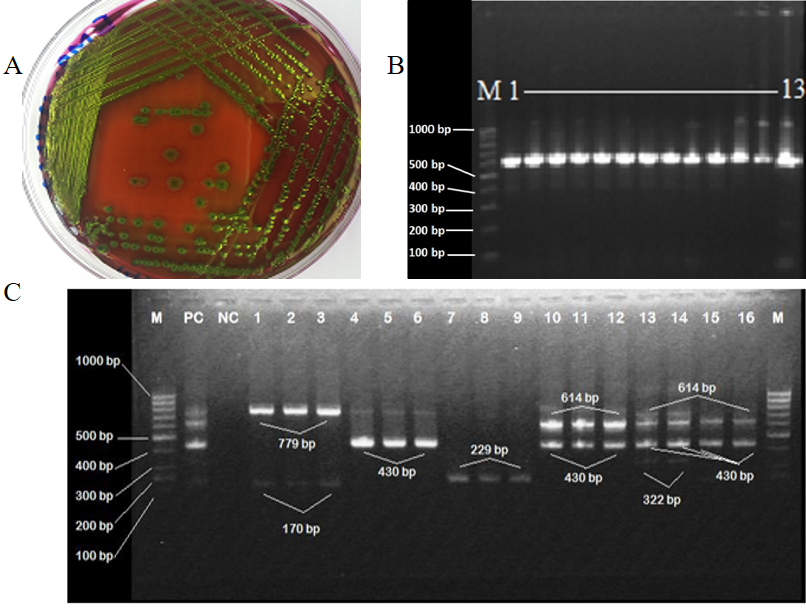Incidence of Diarrheagenic Escherichia coli Pathotypes in Children Suffering from Diarrhea in Tertiary Care Hospitals, Quetta, Pakistan
Incidence of Diarrheagenic Escherichia coli Pathotypes in Children Suffering from Diarrhea in Tertiary Care Hospitals, Quetta, Pakistan
Zil-e-Huma1, 2, Abdul Malik Tareen3, Kaleem Ullah3, Tauseef M Asmat4,Abdul Samad4, Asim Iqbal2, Mohammad Zahid Mustafa3*,Irshad Ahmad5 and Sadeeq ur Rahman6
Isolation and identification of various E. coli pathotypes based on virulent gene profile. A, growth of purified E. coli isolate on EMB agar; B, representative results of amplification of uidA gene of E.coli from collected samples: Lanes 1-13 positive amplification of uidA gene (630bp). M is molecular weight marker, size of which is demarcated on the left; C, multiplex PCR results showing amplification fragments of different DEC. Lanes 1-3 positive amplification of stx2 (779bp). 4-6 shows positive amplification of Agg (430bp), 7-9 for eae gene (229bp), 10-12 shows amplification of stx1 (614bp) and Agg (430bp). Lanes 13-14 denotes the amplification of stx1, Agg and elt genes (614bp, 430bp and 322bp respectively). Lanes 15-16 show amplification of stx1 (614bp) and Agg genes (430bp). M, PC and NC denotes molecular weight marker, positive control and negative control, respectively.










